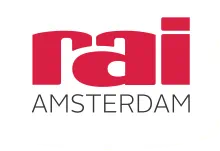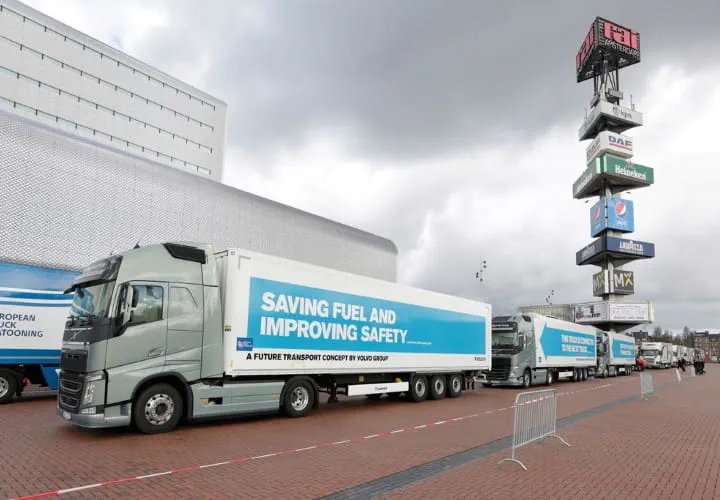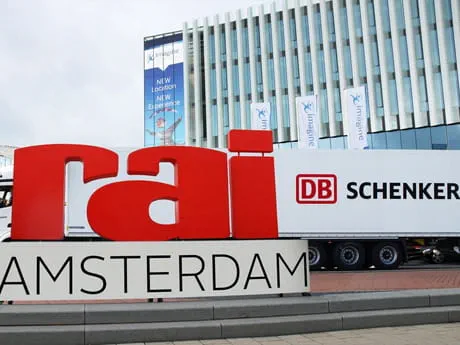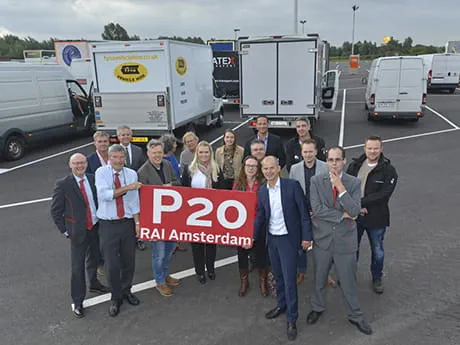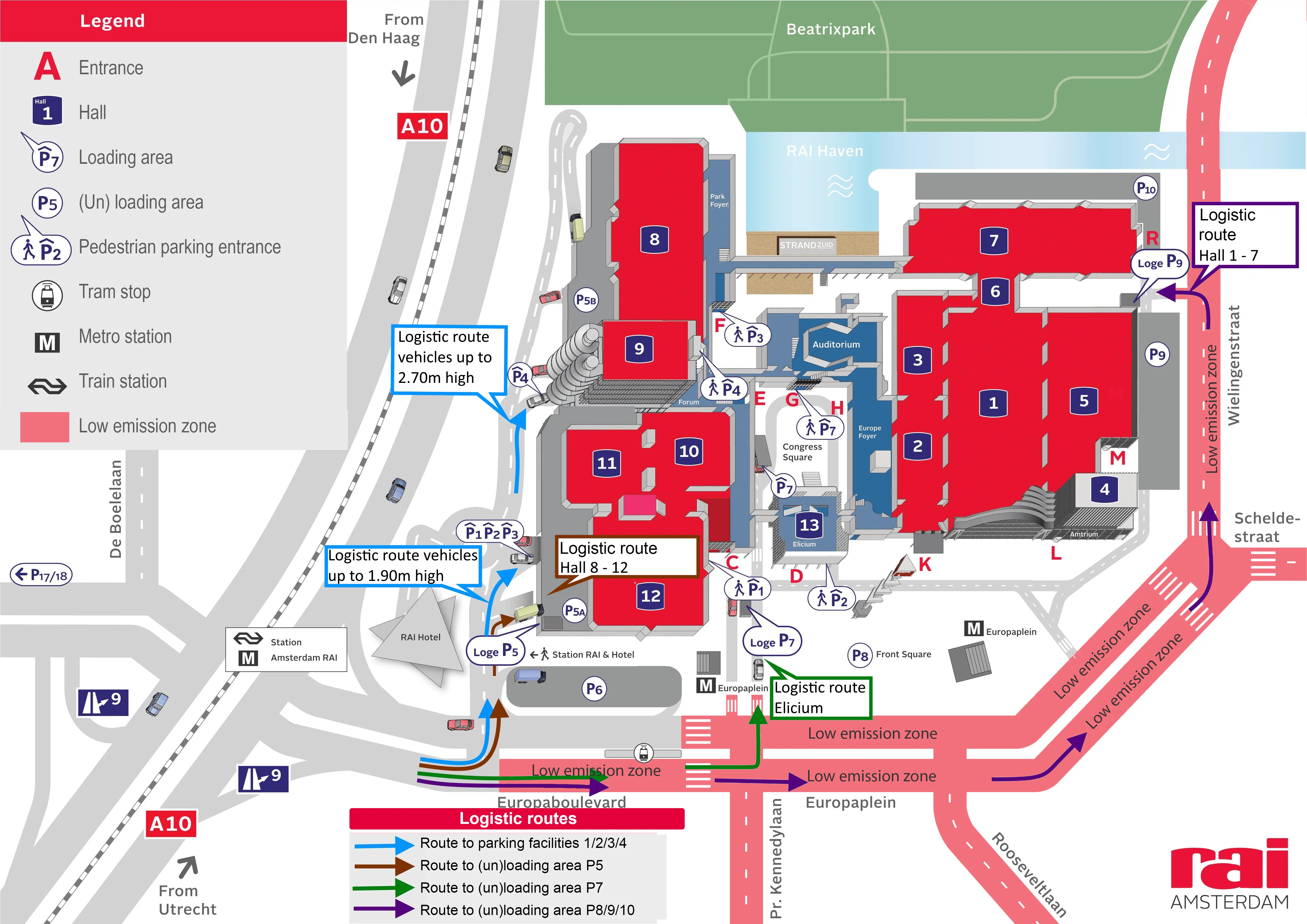Amsterdam has new low-emission zones that keep the most polluting passenger cars, trucks, delivery vans, taxis, buses and scooters out of the city. With the low-emission zone, Amsterdam wants to improve the air quality in the city. The new low-emission zones for Amsterdam fit within the national harmonization scheme for low-emission zones. During the harmonization in 2020, the low-emission zone has been aligned within the A10 ring road, as a result of which the RAI has come to lie within the low-emission zone.
In the coming years, the requirements that apply within the low-emission zone will be tightened up further. From 2022 this will have an impact on traffic around the RAI. The aim is also to have 100% emission-free transport in the low-emission zones from 2025 - 2030.
The overview below lists the requirements for which type of vehicle around the RAI.
|
Type
|
Requirements
|
| Car |
Only diesel vehicles with emission class 4 and higher are welcome, year of construction 2005
|
| Delivery van
|
Only diesel vehicles with emission class 4 and higher are welcome, year of construction 2005
|
| Taxi
|
Diesels from 2009 and newer are welcome around the RAI
|
| Truck
|
Only diesel trucks with the highest emission class 6 are welcome around the RAI
|
| Bus/touring car |
Only diesel buses/touring cars with the highest emission class 6 are welcome around the RAI
|
Licence plate checker
In the link below you can check whether your vehicle may enter the low-emission zone by means of a license plate checker (this license plate checker only works with Dutch license plates).
LICENSE PLATE CHECKER
